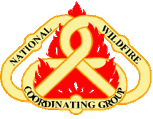I was informed of the event around 0430-0500 in the morning after ignitions were complete. Not much specific information was giving at the time but I was made aware of the issue. At the time sounded more like the gap was narrow- not a complete barrier. I asked more specific questions to those involved at the briefing the next evening at 1800 and it became apparent to me that we needed to conduct an AAR. Due to the timing of these events and the day/night shifts and time off needed the AAR was scheduled for Monday the 30th so that all parties involved would be able to attend (except for Prescott C-2). A thorough AAR and discussion occurred on Monday the 30th with a lot of discussion and venting. A few common themes/findings:
1. Night time burn- things aren't always as they appear at night (i.e. distance, fuel load, etc.) and most of the burners had not walked the unit during daylight hours. May have been a contributing factor.
2. Dry fuels/ heavy fuel load was conducive for active fire spread. Multiple comments were made about the gap left for burners to get out closed much faster that anticipated.
3. Communication- a lot of individuals said they thought about saying something but didn't. Example- moving too fast, the stagger of burners was off, too many burners, etc.
4. Condensed time frame due to ADEQ stating we would not have approval for the following night due to smoke in the Verde Valley from the day before- basically telling us to get it all done quickly.
5. FIRB acting as a burner instead of performing FIRB functions only- could have used him as a scout ahead of the burners to let them know distance/time frame to tie burns in safely.
6. Cumulative fatigue- very long fire season straight into RX burning.
7. Tunnel Vision/task focus- "just wanted to tie in and move to the next task" |



